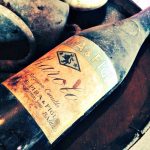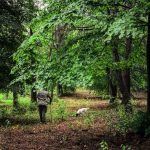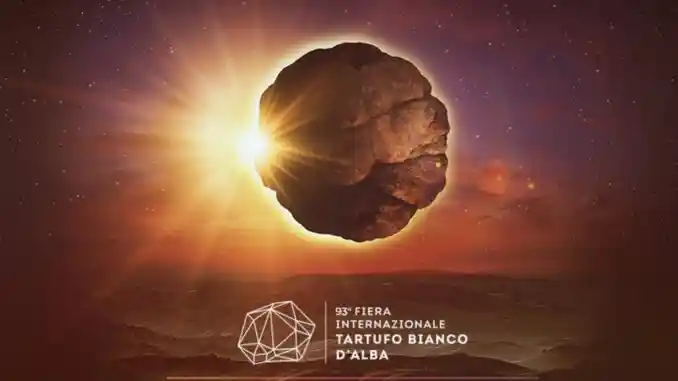Nestled in the heart of Piedmont, amidst the rolling vineyards and picturesque landscapes, lies the ancient city of Asti. Here, every September, the echoes of hooves, the vibrancy of fluttering flags, and the jubilant cries of its people merge into a captivating symphony of tradition, passion, and history: the Palio di Asti. More than just a horse race, the Palio is a living tapestry of Asti’s medieval heritage, a celebration that has remained undiminished through the sands of time.
As the month approaches, Asti undergoes a transformation. Its streets, already steeped in history, come alive with the fervor of competition as different neighborhoods (known as “contrade”) gear up for the event. The air becomes thick with anticipation, and stories of past champions, legendary jockeys, and timeless rivalries are shared and reshared. Yet, the Palio di Asti is not only about the thrilling race itself but also the pageantry and ceremonies that accompany it. From the grand parades showcasing historical costumes to the spellbinding performances of flag-wavers, every moment is a tribute to the rich tapestry of Asti’s past. It’s a time when old meets new, when stories of yesteryears inspire the present, and when the entire city unites under the banner of tradition.
So, whether you’re drawn to Asti by the allure of its famed wines, its architectural marvels, or the Palio’s magnetic pull, prepare to be enchanted. The Palio di Asti isn’t just an event; it’s an emotion, a journey back in time, and a testament to the enduring spirit of a city that honors its history with pride and joy. Welcome to a celebration that has been centuries in the making. Welcome to the Palio di Asti.
Palio di Asti, Sunday 3 September 2023
The Palio of Asti is the oldest horse race in Italy.
It is a conventional festival of medieval foundation. It turned into originally held in may additionally throughout the festivities of client saint San Secondo, however considering the fact that 1967 it takes location on the first Sunday of September. This 12 months, the Palio di Asti could be held in Piazza Alfieri. The 2019 edition of the Palio has won from Rione Cattedrale and Comune di Baldichieri.
Every year, during the September of Asti (Settembre Astigiano) the districts, the villages and the towns of the city challenge each other in a race of horses mounted to sleep, to win the “cloth” up for grabs.
History of Palio di Asti, Horse Race
For almost 1000 years now in the center of the city of Asti, in September the Palio (after 1 week there is the Asti festival of festivals and Asti Palaces of Taste) is run, the historic horse race. To compete in three batteries are the 6 districts, 8 villages, and 7 municipalities, which bring their colors to the most awaited event in the city of Asti. The Palio of Asti was run through the streets of the city until 1861. Later, in 1967 the horse race was held in Piazza Campo del Palio, the largest square in Italy. Instead in 1988, the track was moved to Piazza Alfieri, the triangular square symbol of the city.
The Palio di Asti History
The Palio race is an event that is heard throughout the year, in fact, during the month of May the villages and the districts challenge each other in the Paliotto, an exciting challenge of musicians and flag-wavers. Here, the musicians perform with drums, trumpets and snare drums, to support the performance of the flag-wavers. In the weeks leading up to the Palio, the streets of Asti are filled with flags and colors to delineate the areas of the villages and districts. In the previous months, as usual, the “Estimate of the Palio” is presented, the Captain of the Palio and his ministers. The week before the Palio, the square is set up with sand to create the track and the stands for the thousands of spectators who attend the stake every year.
Historical Parade of Palio di Asti
The days before the race, there are many events that introduce the horse race. In fact, in Piazza San Secondo, the patron saint of the city, from Thursday before the Palio, each district and municipality suburb presents itself withstands dedicated to the sale of representative objects of the district or village. On Friday and Saturday evenings before the Historical Horse Race, each participant at the Palio organizes propitiatory dinners. On Saturday afternoons for the cities of the historic center, the children of the districts and villages will parade wearing clothes representative of their own ward, while instead of the historical theme parade will be held on Sunday of the Historical Horse Race. Each district, village, and the municipality will parade presenting a historical and representative theme to challenge each other in the best procession, following the regulation.
THE PALIO OF ASTI DAY’S SCHEDULE Sunday, 3rd September 2023
Immerse yourself in the medieval ambiance that envelops Asti during the most anticipated time of the year: the Palio week.
As flags wave and trumpets (or “chiarine” as we call them) blare, the Captain and his magistrates majestically ride into the square.
What follows is a series of heart-pounding moments for those fortunate enough to witness the Palio of Asti from the stands or central ground.
Three heats followed by the finale. Each lasting only a few intense minutes. Everything before, during, and after exemplifies what makes the Palio of Asti truly unique.
DAY’S SCHEDULE:
10 AM – Local parishes: Ceremony of blessing the horse and jockey.
11 AM – Piazza San Secondo: Flag-wavers of A.S.T.A. performance.
2 PM – Piazza Cattedrale: Kick-off of the historical procession featuring 1200 participants representing the districts, suburbs, and municipalities participating in the Palio. Route: Piazza Cattedrale > Via Caracciolo > Via Carducci > Via Giobert > Corso Alfieri > Via Gobetti > Via Garibaldi > Via Gardini > Piazza Alfieri. The procession is led by the Captain’s group and the A.S.T.A flag-wavers. The Carroccio, departing from Piazza San Secondo, concludes the parade.
Piazza Alfieri: 4 PM – Palio race with bareback-mounted horses; three heats. 5 PM – Flag-waver performance. 6 PM – Nine-horse final and awarding of the Palio.
When? The first Sunday of September (though events start from the preceding Thursday).
Where? The historic center streets and Piazza Alfieri.
Tickets & Accreditations: Tickets can be reserved by emailing: [email protected]. The ticket office will then provide purchasing details.
The City of Asti: Known for its economic vibrancy, situated centrally between Liguria, the Po Valley, and the Alpine crossings, and boasting of astute and agile businessmen, Asti’s history is captivating. A medieval city at heart, this is where the Palio’s roots lie. The medieval houses, Romanesque churches, and truncated towers dominate the cityscape, providing a nostalgic charm.
The Anticipation: A city preparing for a year. In a week, Asti transforms for its day. Banners and flags herald pride. The square, tracks, and stands evolve. Canopy, pulleys, practice rounds— it all culminates in the day. The preparatory dinners, the eve’s market, the official jockey registrations, and the children’s parade. Then comes Sunday: the morning masses, horse blessings, costumed paraders, palpable tension, excited locals, engaged tourists, open museums… Asti has its Palio. Asti races the Palio!
History of the Palio: Dating back to 10th August 1275, Asti residents raced the Palio against the backdrop of Alba, an Asti festivity tradition. Since then, the Palio has mirrored the city’s historic evolution. Over eight centuries, the race has evolved, retaining its original allure – the competitive charm, partisan passion, a unique bond with the patron saint, and a strong sense of identity.
Folklore: Sounds of neighing horses lining up, challengers’ songs, and the Captain’s proclamation, “The Palio begins!” Vivid colors flaunt the city, from the twirling flags to the stately costumes of the participating lords and ladies. Each individual stands by their faction, engaging in yearly preparations. After all, the Palio might last a day, but its spirit lasts a year. Ritualistic dinners, horse blessings, and the selection of the Palio’s painter, stay true to tradition as we pay homage to Italy’s oldest Palio
The victory of the Palio the historic horse race
In addition to fame and glory, every district, village, and municipality competes to win the banner that is created every year by an artist of the city, or an international artist. At the moment of victory, the winner of the race will be able to receive the so-called “Palio” and will be able to hang it at its own site to symbolize victory.
Discover More:



















